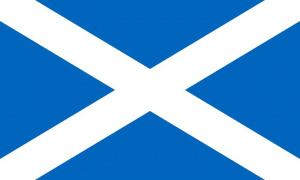Language/Scottish-gaelic/Grammar/Forming-Questions
| ◀️ Days, Months, and Seasons — Previous Lesson | Next Lesson — Negating Sentences ▶️ |
Questions are an essential part of any language, and Scottish Gaelic is no exception. Knowing how to ask questions can help you to communicate more effectively with Gaelic speakers and to expand your knowledge of the language. In this lesson, you will learn how to form questions in Scottish Gaelic, including the use of question words and interrogative sentence structure.
Basic Sentence Structure
Before we dive into forming questions, it is essential to review the basic sentence structure in Scottish Gaelic. In Gaelic, word order is relatively flexible, and the meaning of a sentence does not depend on the placement of the subject, verb, and object. However, the most common word order in Scottish Gaelic is subject-verb-object (SVO), which is similar to English.
Example:
- Tha mi ag ithe uibheacha. (I am eating eggs.)
Notice that the sentence above follows the SVO structure. The subject (mi or 'I') comes first, followed by the verb (tha or 'am'), and the object (uibheacha or 'eggs').
Forming Questions with Question Words
In Scottish Gaelic, forming questions with question words is relatively straightforward. To form a question, we start with a statement and add a question word, such as càit (where), cuin (when), càr (how), or dè (what). We then invert the verb and subject, placing the verb at the beginning of the sentence and the subject after it.
Example:
- Statement: Tha mi a' fuireach ann an Glaschu. (I am living in Glasgow.)
- Question: Carson a tha thu a' fuireach ann an Glaschu? (Why are you living in Glasgow?)
Notice that in the example above, the question word carson (why) is added to the statement to form a question. The verb (tha or 'am') and subject (tu or 'you') are inverted, with the verb now appearing at the beginning of the sentence.
Here are some other question words you can use to form questions in Scottish Gaelic:
- càit (where)
- cuin (when)
- ciamar (how)
- dè (what)
To form a question, simply add the question word to the statement and invert the verb and subject.
Example:
- Statement: Tha an t-uisge sgìth. (The water is tired.)
- Question: Dè an t-uisge sgìth? (What is tired?)
In this example, the question word dè (what) is added to the statement to form the question. The verb (tha or 'is') and subject (an t-uisge or 'the water') are inverted.
Forming Yes/No Questions
Yes/no questions are formed differently than questions with question words. Instead of adding a question word, we simply invert the verb and subject. No other changes are needed.
Example:
- Statement: Tha e blàth. (It is warm.)
- Question: A bheil e blàth? (Is it warm?)
Notice that in the example above, we simply invert the verb (tha or 'is') and subject (e or 'it') to form the question.
Here are some other examples of yes/no questions in Scottish Gaelic:
- Tha an t-sìde fuar. (The weather is cold.) - A bheil an t-sìde fuar? (Is the weather cold?)
- Tha an teine donn. (The fire is brown.) - A bheil an teine donn? (Is the fire brown?)
Using "Nach" for Negative Questions
To form a negative question in Scottish Gaelic, we use the particle "nach" before the inverted verb and subject. This is equivalent to the English word "not" in negative questions.
Example:
- Statement: Tha iad a' bruidhinn Gàidhlig. (They are speaking Gaelic.)
- Question: Nach eil iad a' bruidhinn Gàidhlig? (Are they not speaking Gaelic?)
Notice that in the example above, the particle nach is added at the beginning of the question, followed by the inverted verb (eil or 'are') and subject (iad or 'they').
Here are some other examples of negative questions in Scottish Gaelic:
- Tha an t-uisge blàth. (The water is warm.) - Nach eil an t-uisge blàth? (Is the water not warm?)
- Tha an t-uisge salach. (The water is dirty.) - Nach eil an t-uisge salach? (Is the water not dirty?)
Practice
Now that you have learned how to form questions in Scottish Gaelic, it's time to practice! Try forming questions with the following statements:
1. Tha mi a' dol dhan bhanca. (I am going to the bank.) 2. Tha an ridire a' ruith airson na bùithte. (The knight is running for the booth.) 3. Tha an cat ag ithe ròin. (The cat is eating a seal.)
Conclusion
In this lesson, you have learned how to form questions in Scottish Gaelic, both with and without question words. Remember to invert the verb and subject when forming questions, and to use "nach" for negative questions. By learning to ask questions in Scottish Gaelic, you will be able to communicate more effectively with Gaelic speakers and gain a deeper understanding of the language.
Other Lessons
- Future Tense
- Personal Pronouns
- Conjugating Regular Verbs
- Personal pronouns
- How to Use Be
- Adjectives
- 0 to A1 Course
- Give your Opinion
- Linking with Conjunctions
- Questions
| ◀️ Days, Months, and Seasons — Previous Lesson | Next Lesson — Negating Sentences ▶️ |

